Wednesday/Thursday - Barcelona Part Two (Page Five)
First Stop: Barcelona Barri Gotic (Gothic Quarter)


Plaça Reial
Did you know? - Plaça Reial (In Spanish Plaza Real, meaning "Royal Plaza") is a square in the Barri Gòtic of Barcelona, Catalonia, Spain. It lies next to la Rambla and constitutes a well-known touristic attraction, especially at night. On the square are a large number of restaurants and some of the city's most famous clubs including Sidecar, Jamboree or Karma. It is also known for its many outdoor areas and is a popular meeting place during the summer, La Mercè in September, when open air concerts take place, and during other celebrations such as New Year's Eve, often being really crowded. The Plaça Reial was designed by Francesc Daniel Molina i Casamajó in the 19th century. The square is twinned with Plaza Garibaldi, in Mexico DF.


La Mercè basilica.


Short walk to City Hall from the Ship

City Hall

Barcelona City Hall (Plaça de Sant Jaume)




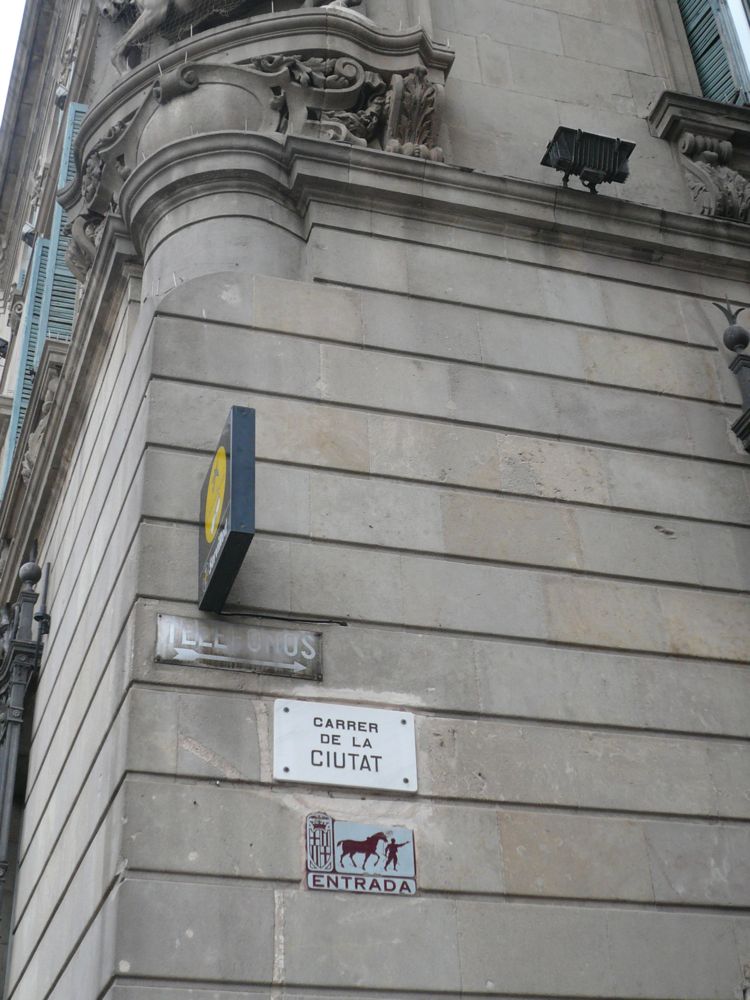
















Cathedral of Santa Eulalia
Did you know? - The Cathedral of the Holy Cross and Saint Eulalia (Catalan: Catedral de la Santa Creu i Santa Eulàlia, Spanish: Catedral de la Santa Cruz y Santa Eulalia), also known as Barcelona Cathedral, is the Gothic cathedral and seat of the Archbishop of Barcelona, Spain.
The cathedral was constructed throughout the 13th to 15th centuries, with the principal work done in the 14th century. The cloister, which encloses the Well of the Geese (Font de les Oques) was completed about 1450. The neo-Gothic façade was constructed over the nondescript exterior that was common to Catalan churches in the 19th century. The roof is notable for it gargoyles, featuring a wide range of animals, both domestic and mythical









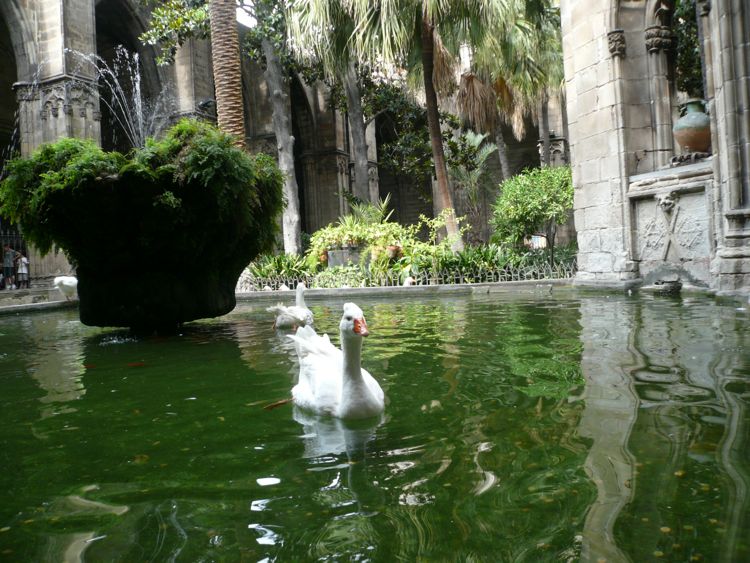
Parts Of The Cathedral Are Undergoing Restoration



















Onward And Upward In A Double Decked Bus
Did you know? - The tourist bus service gives the opportunity to visit the city on open-topped double-decker buses. The Barcelona Bus Turistic runs along three sightseeing routes, and passengers can get on and off as many times as they like.


Please throw your headsets here so they can be recycled



Sagrada Família Is Also Getting Restoration Work
Did you know? - The Temple Expiatori de la Sagrada Família, often simply called the Sagrada Família, is a massive, privately-funded Roman Catholic church that has been under construction in Barcelona, Catalonia, Spain since 1882 and is not expected to be complete until at least 2026. A portion of the building's interior is scheduled to open for public worship and tours by September 2010.
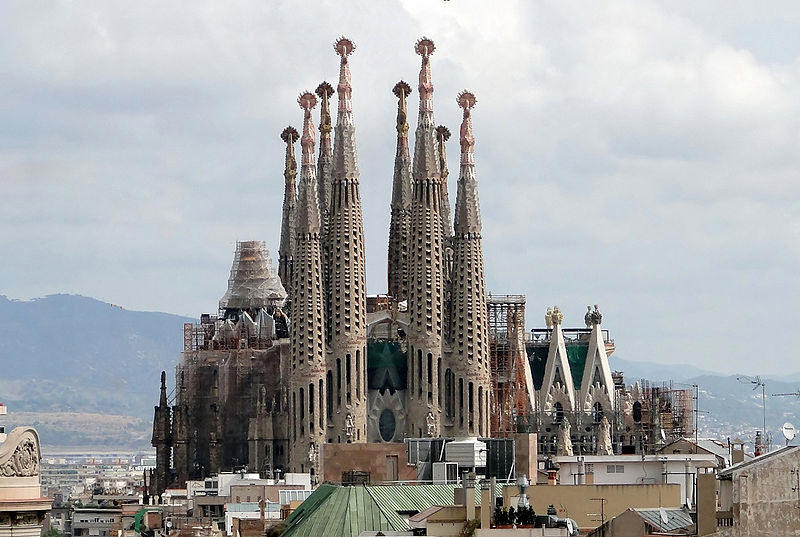
Did you know? - The design of La Sagrada Família is replete with Christian symbolism, as Gaudí intended the church to be the "last great sanctuary of Christendom". Its most striking aspect is its spindle-shaped spires. A total of eighteen high spires are called for, representing in ascending order of height the Twelve Apostles, the four Evangelists, the Virgin Mary and, tallest of all, Jesus Christ.










Did you know? - The Church will have three grand façades: the Nativity façade to the East, the Glory façade to the South (yet to be completed) and the Passion façade to the West. The Nativity façade was built before work was interrupted in 1935 and bears the most direct Gaudí influence. The Passion façade is especially striking for its spare, gaunt, tormented characters, including emaciated figures of Christ being flogged and on the crucifix. These controversial designs are the work of Josep Maria Subirachs. The Glory Façade, which began construction in 2002, will be the largest and most monumental of the three and will represent one’s ascension to God. It will also depict various scenes such as Hell, Purgatory, and will include elements such as the Seven Deadly Sins and the Seven Virtues.
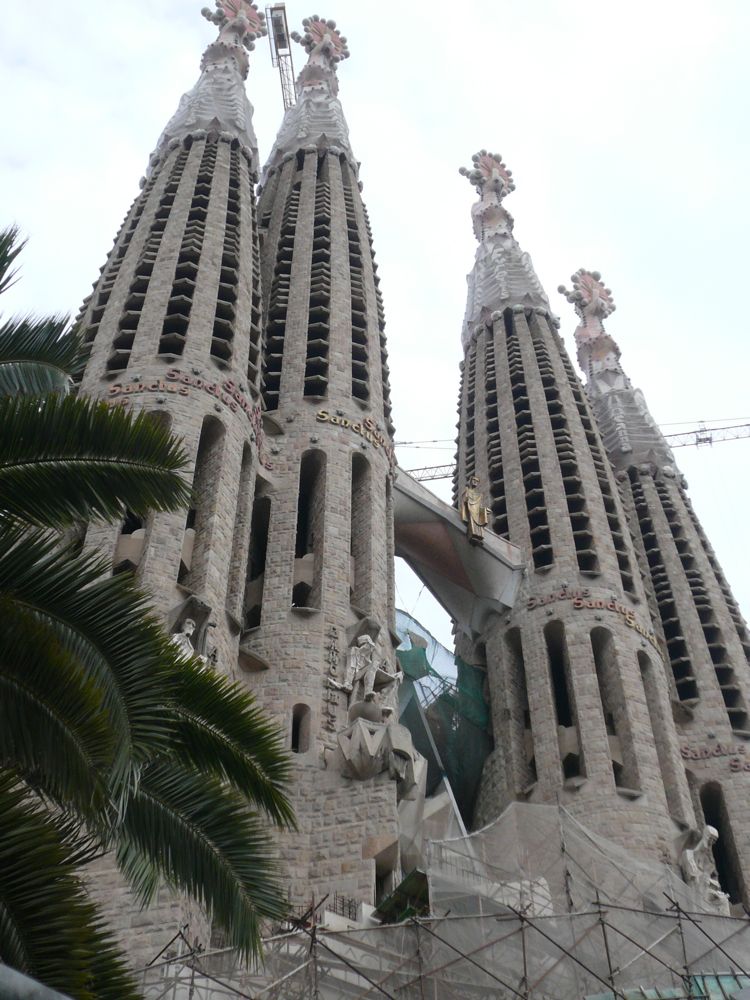






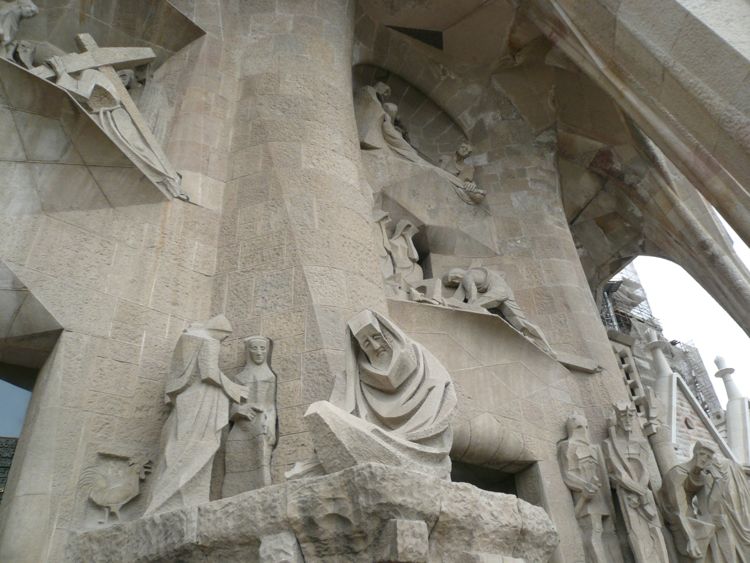
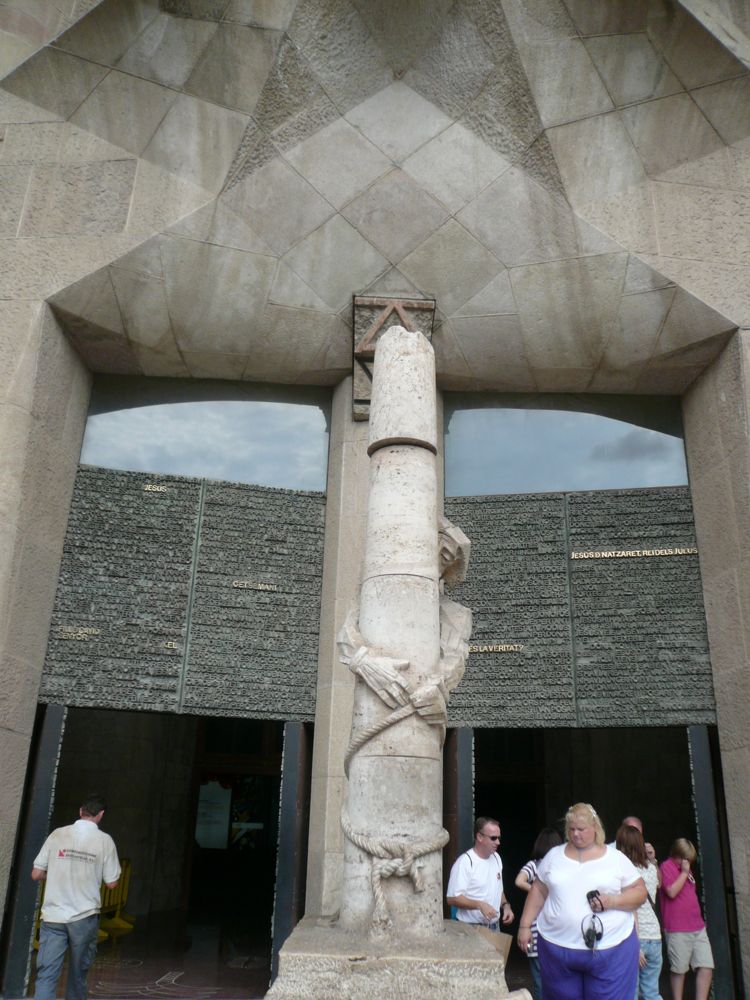













Tree-like supporting pillars of roof

See More Barcelona On Page Three
- Page 1: Summary
- Page 2: Florence Italy
- Page 3: Monte Carlo
- Page 4: Barcelona Part One
- Page 5: Barcelona Part Two
- Page 6: Barcelona Part Three
- Page 7: Majorca
- Page 8: Tunisia Part One
- Page 9: Tunisia Part Two
- Page 10: Trapani, Sicily
- Page 11: Napels (Pompeii)
- Page 12: Roma Part One
- Page 13: Roma Part Two
- Page 14: Roma Part Three
- Page 15: Roma Part Four
- Page 16: Roma Part Five
